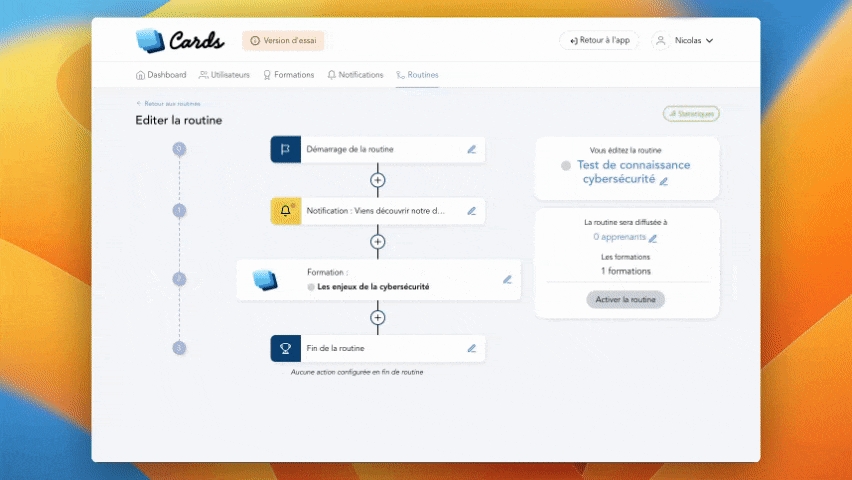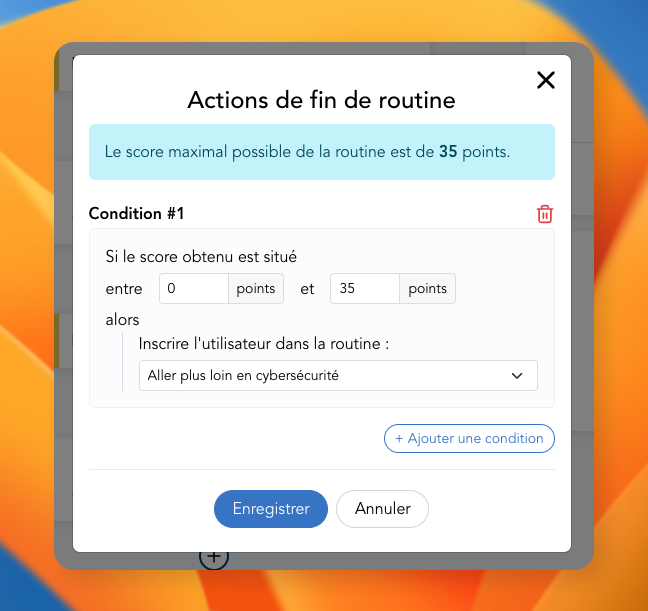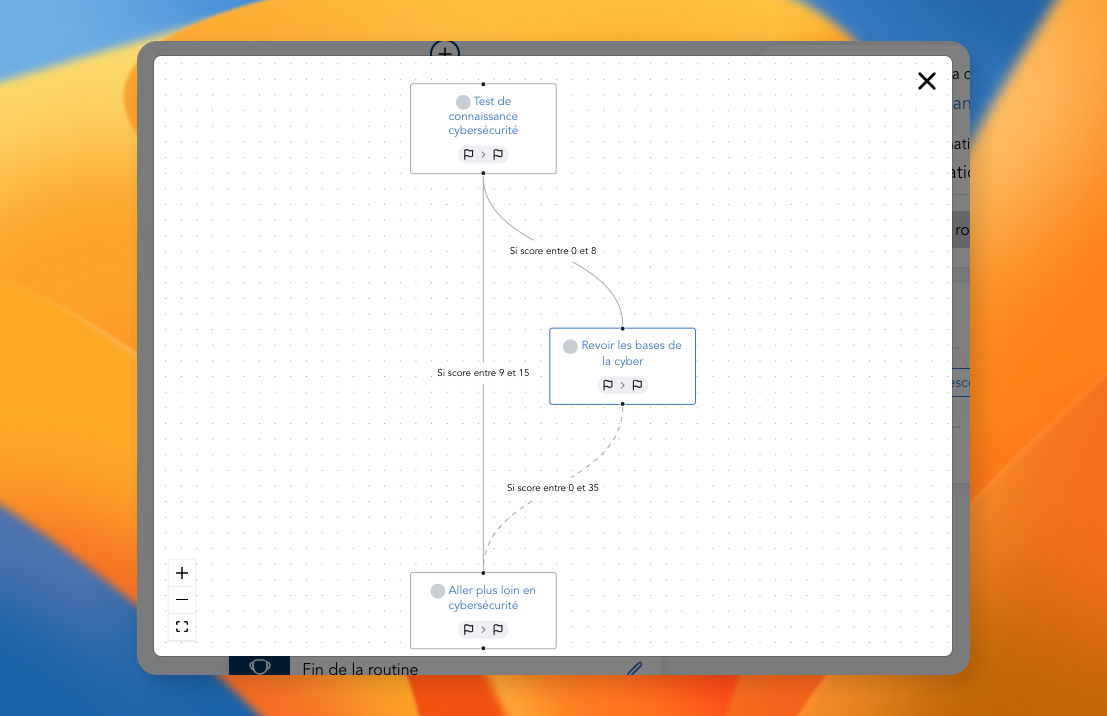Edit a routine
Presentation
The editing page of a Learning Routine® allows you:
to modify the information on the routine (title, description, start date, category, learners visibility)
to add, modify or delete the steps that compose it
to activate or deactivate the routine.

The steps of the routine
To add a step, click on the "+" between the blocks.
You can choose from 5 possible steps :
notification: to decide whether to send a notification (push and/or email)
training: to choose a training to unlock at this stage of the routine
delay (available only for "progression" type routines): to add a delay between 2 steps, in days or hours
Self-positioning: to allow you to assign a level to your learners, based on several micro-learning modules
Conditions: to define conditions and create branching paths in your routine (and thus adapt the learning path according to each user's level).
If you are using a "dated" type routine, you can, for each step, decide precisely on what date it should be executed.
A routine must be in "draft" to add or modify steps (or modify the start date). You can very well deactivate a routine temporarily, then reactivate it later. Your learners will continue their journey without worries.
Add learners
In the right column you can see the number of users registered in the routine. Click on it to easily add or remove users.
Until the routine is activated, users will not have any steps initiated.
If your routine is already enabled, then the 1st step will run immediately for the added users.
To add users, you have several options:
"All users": to enroll all users of your Cards space in the routine.
"One or more groups": to associate one or more groups with the routine. Once the group is linked, the users added to the group will be automatically enrolled in the routine. The same applies when you remove a user from the group; they are removed from the routine.
"Users from one or more groups": to enroll users from one or more groups, but without directly linking the group to the routine. This allows you to add users at a specific time.
"Users with one or more tags": to register users with certain tags on their profile.
"Some users": to select users one by one.
Link routines

On Cards, it is possible to link routines together, and conditionally.
You can decide to automatically enroll your learners in other routines at the end of the course, depending on the obtained score.
The link between routines is always added from the parent routine. At the bottom of the steps of the routine that you are editing, you can click on the "edit" icon, present in the last "end of routine" block.
A window then opens, allowing you to add conditions, which, if met, will execute the registration of the learner in another routine (to be selected in this same window).

When you choose the minimum and maximum score, the condition is "score included". Example :
you set a score condition between 10 and 20
if the learner is 10 or 20 in the routine -> then the action is triggered
if the learner is 9 -> the action is not triggered
Once you have chosen the conditions and actions, a tree structure of your routines will be available on the editing page (right column, "tree structure" link).

By clicking on the routine titles, you can easily switch from one to another.
The parent and child routines are also displayed respectively above and below the steps, again with a link to allow you to quickly move from one to the other.
Mis à jour